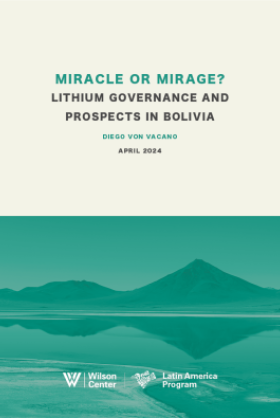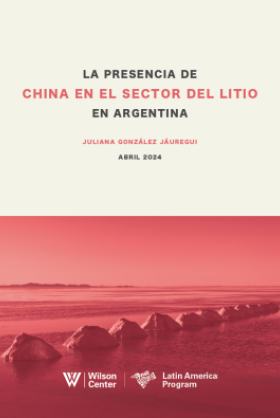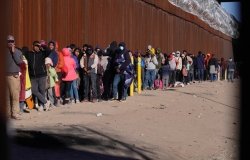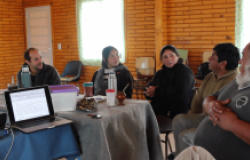Commemoration of the Chernobyl Disaster: The Human Experience Twenty Years Later
Although many people know the basic story of Chernobyl, for U.S. audiences the details and the human experience of Chernobyl have faded. The Kennan Institute, in cooperation with the University of Alberta and the Harriman Institute, will commemorate the disaster on its twentieth anniversary in an attempt to help to bring the personal side of the story back into the spotlight.
Overview
Opening Remarks:
Blair Ruble, Director, Kennan Institute, opened the conference by remarking that it was intended to both commemorate the 1986 Chernobyl disaster and promote conversation about its local, national, and international impact. He noted that twenty years later is a difficult time to examine a major historical event such as Chernobyl. Enough time has passed to allow historians and other scholars sufficient distance to draw conclusions about the disaster, but these conclusions can come into conflict with the memories and understandings of people who witnessed the event firsthand. Oleh Shamshur, Ambassador of Ukraine to the United States described some of the effects of the Chernobyl disaster, arguing that the Soviet government's handling of the issue proved to be an important test of Mikhail Gorbachev's program of reforms and openness. Vladimir Ryabachenkov, Counselor, Embassy of the Russian Federation, called on the international community to explore new options for safer nuclear energy in order to prevent future accidents. Dmitry Ponomarev, Counselor, Embassy of Belarus, discussed the continuing legacy of the accident and how it has affected the people of Belarus.
Panel 1: An Historian's Perspective
David Marples, Professor of History, University of Alberta, commented that from the moment it opened, the Chernobyl nuclear power station had been plagued with problems. The reactors had a design flaw that rendered them unstable at low power. On September 9, 1982, an incident at Chernobyl's Reactor No.1 released radiation into the air. Thus, noted Marples, the area surrounding the station was actually "precontamined" prior to the 1986 accident. Less than four years later, a pre-dawn low power test of Chernobyl's Reactor No. 4 went disastrously wrong, and the resulting explosion released massive amounts of radiation. Even as they directed frantic efforts to contain the fire at the reactor, the Soviet leaders delayed public announcement of the accident, as well as any evacuation of the people in the area. The radiation was carried by prevailing wind patterns deep into Belarus, Ukraine, and Russia, and was first detected internationally in Sweden and Finland. Marples noted that the remaining reactors at the Chernobyl nuclear plant were not shut down until 2000.
The accident had an immediate and lasting legacy, according to Marples. Immediately following the Chernobyl disaster, anti-Moscow sentiment increased in Ukraine, and autonomy movements across the Soviet Union gained momentum. Chernobyl and its long-term effects remain major issues of concern for residents of Ukraine and Belarus, said Marples. Of particular importance is the extent to which radiation exposure has increased the incidence of disease and psychological trauma, and how it is contributing to population decline. Marples noted that two recent reports, one from the International Atomic Energy Agency (IAEA) and one from Greenpeace, gave wildly different estimates about the long-term impact of the accident on the overall health of the affected populations in Ukraine, Russia, and Belarus. He argued that the IAEA's report, which estimates 4,000 deaths directly attributable to the explosion, is certainly understated, while the Greenpeace report of nearly 100,000 deaths from Chernobyl-related cancers is overstated. Marples stressed in conclusion that the effects of Chernobyl are far from a settled matter, and consensus on the causes and effects of the accident remain a distant goal.
Panel 2: The Health Perspective
Didier Louvat, Head, Waste Safety Section, International Atomic Energy Agency, presented the findings of the Chernobyl Forum, a group which included representatives of international organizations (such as the United Nations Development Program, the World Health Organization, and the International Atomic Energy Agency); officials from Russia, Ukraine, and Belarus; and prominent scientists and health experts. The Chernobyl forum found evidence of serious health consequences among the 600,000 "liquidators" who participated in the clean-up work after the accident—including increased rates of leukemia and other cancers, increased rates of cardiovascular disease, and higher risk of cataracts. The forum predicts that there will be 4,000 premature deaths directly attributable to radiation exposure among this group, in addition to 50 who died from radiation poisoning immediately following the accident. Another health consequence has been high rates of thyroid cancer among children who were exposed to irradiated milk. The forum did not find reliable evidence of any other health affects among the 5 million people living in contaminated regions of Ukraine, Belarus, and Russia. However, the forum did find that the psychological consequences of the Chernobyl accident have been severe. Regarding the environmental consequences of the accident, Louvat noted that some areas around the reactor will remain unsafe for human habitation for many years to come. However, he argued that radiation levels have dropped substantially in much of the exclusion zone, and some of the land can be returned to use.
The Chernobyl Forum gave a number of recommendations for dealing with the lingering consequences of the Chernobyl accident. On the environmental side, decommissioning the destroyed reactor should be a top priority. On the health side, the two priorities should be providing assistance to the former liquidators and addressing the serious psychological consequences that have affected many people. The forum also suggested further research should be done on the long-term effects of the accident.
Murray Feshbach, Senior Scholar, Woodrow Wilson Center, argued that the Chernobyl Forum was too assertive about its findings, given the high level of uncertainty that exists due to shortcomings of in health statistics—particularly Soviet-era statistics—and the long incubation period of many cancers. He also criticized the forum for examining data from only Ukraine, Belarus, and Russia, despite the fact that former liquidators live throughout the former Soviet Union and the fact that countries in Western Europe believe that they have lost citizens due to Chernobyl-related cancers. Feshbach noted that an Israeli study demonstrated that the children of Chernobyl liquidators who emigrated to Israel had an increased risk of birth defects. He added that cases of leukemia—the most common disease resulting from radiation exposure in children—are often recorded instead as "hemoglastosis" in Russia, resulting in artificially low reported rates of leukemia.
Leonard Mazur, Member of the Board, Children of Chornobyl Relief and Development Fund, described some of the health effects that the Children of Chornobyl Research and Defense Foundation has identified through their work with Chernobyl victims and their children in Ukraine. He argued that there is no "safe" level of radiation exposure, and that children and the unborn are most sensitive to the effects of radiation. He listed many serious health effects, including: an epidemic of thyroid cancer in children; an increase in spinabifida and other neural tube defects; increased prevalence of rare and unusual birth defects; an increased rate of cataracts and other eye defects in children and newborns; effects on children's growth and development; increased rates of breast cancer; radiation-induced cardiovascular disease and heart defects in children; and increased rates of bone diseases and deformities. Mazur warned that we have not yet seen the full effect of Chernobyl, because some diseases take more than twenty years to develop, and because children of liquidators have experienced chromosomal damage that can be passed on to future generations. Mazur argued that Ukraine is ill-prepared to deal with this kind of public health crisis, and he suggested priorities for the international community to help address the health effects of Chernobyl, including: supporting further research on birth defects, leukemia, and cancers other than thyroid cancer; providing funding for children from the region who need surgery to correct congenital heart defects; and increasing access to pre-natal care for women affected by Chernobyl radiation.
Luncheon
In her luncheon remarks, Representative Marcy Kaptur (D-OH) told the assembled conference participants that work on understanding the effects and importance of the Chernobyl accident of twenty years ago remains incomplete. She emphasized the importance of scientific rigor in the study of those effects, and congratulated the participants, organizers, and cosponsors of the conference for contributing to that work.
Kaptur, who is a descendent of emigrants from Ukraine, explained the importance of the Chernobyl accident for her as an individual and as a policymaker. She noted that the troubled Davis-Besse Nuclear Power Station located within her own district is a source of growing concern only highlighted by the anniversary of the accident.
The Chernobyl accident was the worst civilian nuclear accident ever, continued Kaptur, releasing 90 times more radioactive material than the atomic bomb dropped on Hiroshima. It was a disaster that transcended national boundaries, as elevated levels of radioactivity were detected as far away as Scandinavia, the United States, and Japan. The legacy of the disaster remains, and is not limited to the staggering estimated health and economic costs. For example, migrants from conflict zones like Afghanistan are now resettling villages in Ukraine that were evacuated after the accident.
Kaptur announced that the House of Representatives unanimously approved HR 703, which recognizes the 20th anniversary of the Chernobyl accident and supports continued efforts to mitigate its consequences. She informed the audience of congressional hearings on the accident scheduled for the day after the Wilson Center conference.
Kaptur stressed in conclusion that Chernobyl and its consequences will remain with us for many years to come. It should serve as a focal point of international cooperation to develop working relations and closer ties on multiple levels: scientific, medical, diplomatic, and educational.
Panel 3: Environmental Perspective
Alla Yaroshinskaya, a journalist at the time of the disaster, told the story of how she tried to investigate the Chernobyl accident and the governmental obstacles she faced as a journalist and, later, as a member of parliament. She argued that the Soviet government actively tried to hide the severity of the accident and the extent of radioactive contamination, as well as to limit public discussion of the problems and potential solutions. She described how this disaster helped rally political opposition to Soviet rule and became a symbol for activists to push for other environmental issues. Yaroshinskaya called upon the international community to organize a new group to re-investigate the effects of the accident.
Mary Mycio, author of The Wormwood Forest: A Natural History of Chernobyl, argued that the Chernobyl accident was a tremendous human tragedy, but not, in fact, an environmental disaster. She described how the exclusion zone around Chernobyl has experienced a resurgence of animal life, including rare species. She suggested that the zone, which will be dangerous for human habitation for many years, should be designated a wildlife preserve.
DJ Peterson, Senior Political Scientist, RAND, discussed how the disaster has had varied impacts at different levels. On the local level, the still dangerous remains of Reactor 4 need to be stabilized. Peterson noted that the current casing around the reactor, called the "sarcophagus," must be repaired or covered by a new structure. The long-term issue that still remains is what to do with the material that is left inside the plant, since reports indicate that only three percent of the radioactive material in the reactor was actually released in the explosion. In addition, a large amount of contaminated materials, such as construction equipment, was simply left behind. The biggest issue of all, Peterson contended, is how to repair the psychological damage of the residents in the affected areas. He suggested that the idea of allowing this region "to just lie there," rather than attempting to return it to productive economic use might be the best solution. Peterson concluded his presentation by saying that the Chernobyl disaster started a political and environmental revolution as well as anti-nuclear one. The Chernobyl accident forced other countries to re-think nuclear power in general, including the use of nuclear power to limit global climate change.
Panel 4: The Human Experience
Margaret Paxson, Senior Associate, Kennan Institute, opened the session by remarking on the dichotomy of perceptions on the Chernobyl disaster that had been expressed thus far during the conference: some stress the importance of cataloging the pathology of the event and understanding the nature and extent of the damage done, while others hope for normalcy in the region and feel strongly that we must move beyond the legacy of the accident. Whatever perspective one takes on Chernobyl, she said, it is important to understand the ways in which the accident has affected individuals, both in order to put Chernobyl in its historical context, and to make meaningful recommendations for the future.
Kate Brown, Assistant Professor, Department of History, University of Maryland Baltimore County, reinforced this notion of a powerful bond that ties individuals to space that is meaningful to them and their families. She described the transformation of the lands surrounding the Chernobyl plant from a once-thriving multiethnic borderland region in the pre-Soviet period that was inhabited by peacefully coexisting Ukrainians, Russians, Poles, Germans, Jews, and others, to an isolated and depressed area of Ukrainian heartland, following several separate episodes of mass evacuations, deportations, and genocide. The explosion of the nuclear reactor has come to symbolize the suffering of the Ukrainian people in this region. Kate Brown termed it a "requiem to the twentieth century."
Irene Zabytko, author of The Sky Unwashed, a fictionalized account of one family displaced by the Chernobyl disaster, explained that she based her novel upon people she knew and oral histories she heard during her childhood in a Chicago neighborhood filled with Ukrainian émigrés. Zabytko concluded the session with a reading from her book, a moving passage vividly depicting the solitude experienced by one Chernobyl survivor who returns to her former home in the contaminated region.
Film Screening and Discussion: Chernobyl Heart
Chernobyl Heart is an Academy Award winning documentary chronicling the lives of people living in areas of Belarus contaminated by the Chernobyl disaster. The region is struggling with a greatly increased frequency and severity of cancers and birth defects since the explosion. Chernobyl Heart is the term for an unusual heart condition, consisting of multiple holes in the heart, that is prevalent in the Chernobyl radiation zone. After the screening of the documentary, William Novick—a pediatric heart surgeon and Director of the International Children's Heart Foundation—discussed the controversial and emotional topics evoked by the documentary.
Novick acknowledged the claim that there is not and likely will never be any indisputable evidence that Chernobyl is the direct cause of increased rates of heart disease and rare malformations of children born in the contaminated region after the explosion. However, the fact that these problems appear with elevated frequency in Chernobyl-affected regions is beyond question, he said. As the incidence of heart disease rises, the greater problem, he argued, will be the public health challenge. Surgeons lack the training and facilities to operate on children in a timely manner. Novick described the results of international assistance in Belarus, which have substantially increased the chance of survival of local children. Similar efforts have been initiated in Ukraine, but with less success.
While addressing the specific problem of heart disease, Novick asserted that this is not just a regional problem—this is a global challenge. He stated that the primary question we need to address is whether we want to survive as human beings, and if there will be enough cooperation to do this. Novick referred to the opening statements of David Marples, in which he mentioned that there have been conflicting reports about the results of Chernobyl, many at opposite extremes with agendas attached to them. According to Novick, if the problems related to the results of nuclear catastrophe are to be solved, and if future problems are to be avoided (or addressed when another catastrophe occurs), we must find a middle road that avoids such political agendas.
Speakers

Blair A. Ruble
Former Wilson Center Vice President for Programs (2014-2017); Director of the Comparative Urban Studies Program/Urban Sustainability Laboratory (1992-2017); Director of the Kennan Institute for Advanced Russian Studies (1989-2012) and Director of the Program on Global Sustainability and Resilience (2012-2014)
Oleh Shamshur
Vladimir Ryabachenkov
Dmitry Ponomarev
David Marples
Didier Louvat
Murray Feshbach
Research Professor Emeritus, School of Foreign Service, Georgetown University, Washington, D.C.
Leonard Mazur
Marcy Kaptur
Alla Yaroshinskaya
Ph.D. Writer
Mary Mycio
DJ Peterson
Irene Zabytko
Margaret Paxson
Author, Riverhead Books; Former Senior Associate, Kennan Institute

Kate Brown
William Novick
Hosted By

Kennan Institute
The Kennan Institute is the premier US center for advanced research on Eurasia and the oldest and largest regional program at the Woodrow Wilson International Center for Scholars. The Kennan Institute is committed to improving American understanding of Russia, Ukraine, Central Asia, the South Caucasus, and the surrounding region though research and exchange. Read more

Environmental Change and Security Program
The Environmental Change and Security Program (ECSP) explores the connections between environmental change, health, and population dynamics and their links to conflict, human insecurity, and foreign policy. Read more

Maternal Health Initiative
Life and health are the most basic human rights, yet disparities between and within countries continue to grow. No single solution or institution can address the variety of health concerns the world faces. By leveraging, building on, and coordinating the Wilson Center’s strong regional and cross-cutting programming, the Maternal Health Initiative (MHI) promotes dialogue and understanding among practitioners, scholars, community leaders, and policymakers. Read more
Thank you for your interest in this event. Please send any feedback or questions to our Events staff.










